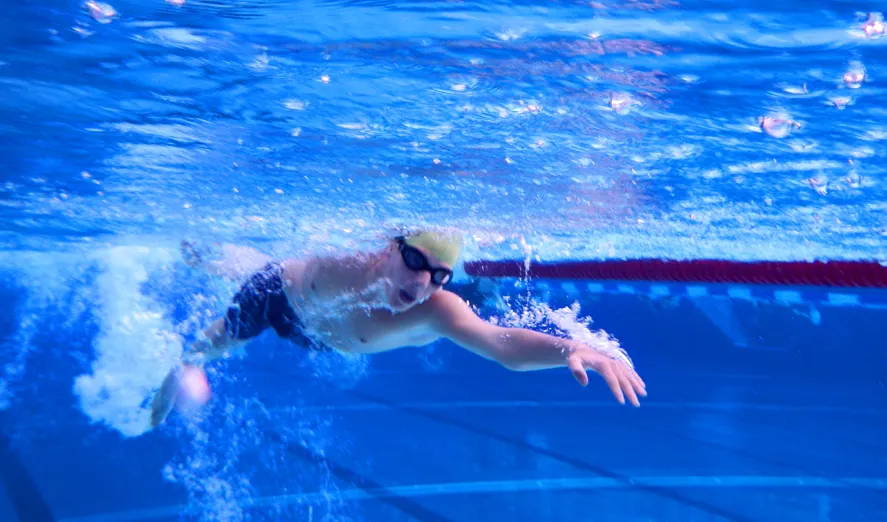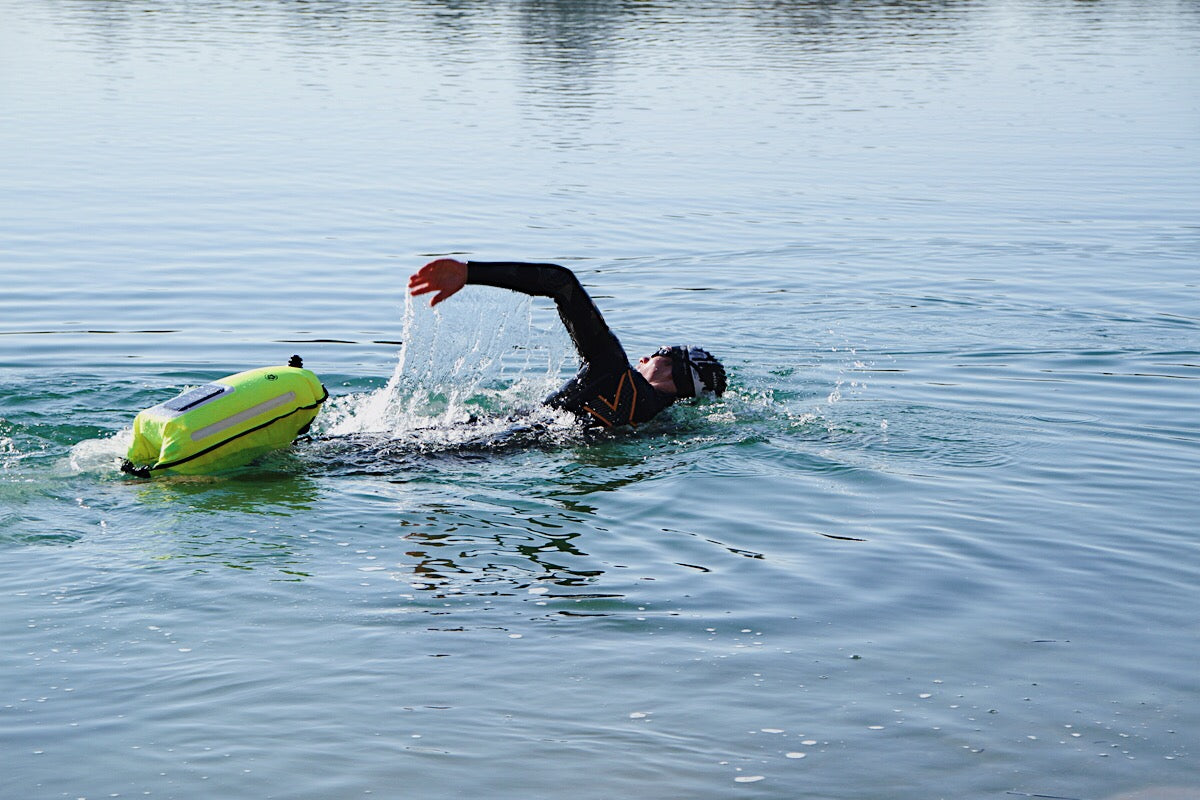Swimming - for some triathletes the biggest problem discipline. The reason for this, however, is often only a lack of preparation and poorly adapted training plans , and thus a problem that can be solved. In order to prepare ideally for the wet start of the triathlon, it is not enough to simply make the time in the water as long as possible. This leads only too often to splashing and continuous swimming and thus not to an improvement in performance in the water.
Here we show you the most common mistakes in swimming training and tips on how to avoid them.
1. No training or not very effective training
Effective technology is required to ensure that the performance in the water is as high as possible and the energy consumption as low as possible. Especially for triathletes, improving their condition is usually no longer necessary, since endurance is already sufficiently required and built up during running and cycling training. Therefore, the focus on the correct technique is all the more important in swimming, which is why the first part of the triathlon also requires a different approach than the other two disciplines.
Technical training should therefore not be missing from any training session, since most triathletes do not come from swimming and therefore an inefficient swimming style is very often a problem. With this in mind, many athletes still don't have enough technique units implemented in their training schedule, or technique exercises are just rolled out without focusing on the real core of the exercise, or paying attention to the body's feedback.
Tip: Try not to set your swimming speed too high during training so that you can really concentrate on each individual movement! It's also helpful to focus on one area during each technique session, such as the common "high head" or delayed breathing. A swimming seminar for triathletes is also a sensible investment, since the right technique is taught in detail right from the start.
2. Lack of variety
The most common approach to swimming training is continuous swimming. You simply stay in the water for as long as possible and swim your laps the whole time. While this type of training may burn some calories, it does not improve swim pace.
Training units should therefore be built up in intervals: This means not swimming 1,000m in one go, but dividing the training unit into sections that can be between 25 and 400 meters long. Due to the shortness of these distances, it is much easier to maintain efficient technique and swim at a faster pace. When it comes to speed, you can stick to the target competition times, for example 10 x 100 meters in 1:45 minutes.
Tip: At the beginning of the training year, start with shorter intervals (25-50m) and swim them in sprints to improve your basic speed. Then increase these intervals over time. In addition, it is important to ensure that the units are varied and to incorporate slow, technique-oriented intervals.
3. No additional stability / mobility training
Mobility and core stability are neglected by many triathletes. However, it has been shown that targeted training in these areas can lead to a significant improvement in performance.
When swimming, the position in the water is particularly important. In order to achieve the most efficient position in the water, you need good core muscles.
In addition, the back and abdomen are used to balance the arm and leg kicks. So if you train your stability and core muscles, you can improve your position in the water enormously. Flexibility is also required, as shoulder rotation and arm extension are very important for an effective arm pull. Regular mobility training can also significantly reduce the risk of injury.
Tip: Implement core stabilization exercises and swim-specific stretches into your training plan at least twice a week for 30 minutes each.
4. Relying on flotation devices
Many triathletes train like paddles and pull buoys are their best friends. But is that the right attitude? With pull buoys you can easily correct a bad position in the water and swim faster despite inefficient footwork. So you cheat yourself and get the feeling that you have a good technique. A similar problem occurs with the paddles: the drive surface is larger and this makes you faster, but it does not improve the arm stroke technique and the increased force load can lead to tendon irritation in the shoulder area.
If you then take off the swimming aids again, which is unavoidable in competitions, the body is under the real strain, no longer used to being supported by the equipment, and the technique then has to suffer. Swimming aids should therefore not be used too often, and if so, only used in a targeted manner during training, for example to concentrate on a specific area of technology.
Tip: As with the structure of the training, variety is important! Use pull buoys, paddles and fins in training, but keep in mind that you must not use them in competition. For example, one option would be to swim intervals with a focus on leg kicks and arm strokes with flotation devices, and then freestyle the same intervals again to improve your water position and increase the feel for both assisted and unaided swimming.
5. No open water training
In most triathlon competitions, the swim event takes place in open water, which can greatly affect swim performance. In addition to the cold, waves and orientation difficulties, you also have to contend with the previously unfamiliar physical contact with other athletes.
If you do not adapt your training to these circumstances, it is difficult to show the performance in the pool in competition. The wetsuit can be another change, as it influences the swimming technique. Although the position in the water is improved by the increased buoyancy, the freedom of movement of the arms and shoulders is restricted at the same time. As a result, the wetsuit makes poorer swimmers a little faster, but you should still adjust your muscles to the changed technique during training.
Tip: Immediately if the weather permits, swimming units in the open water are recommended once a week. It is best to bring your training partner along to simulate physical contact and swimming in the shadow of the water.
The most important poolside swimming accessory
Various training aids can be used for targeted technique training, but also for further strength and endurance training.




















